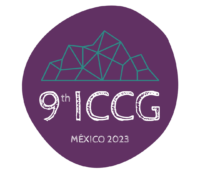Palabras clave: Cartografía, controversias, equidad epistémica, riesgos de desastre. Resumen: El objetivo de este trabajo se centra en profundizar en el conocimiento sobre algunos aspectos epistémicos y políticos asociados a la divulgación, interpretación, producción y usos sociales de mapas así como de algunas aplicaciones geotecnológicas vinculadas a la gestión del riesgo de desastres.
Dicho análisis partirá de nociones de filosofía política de la ciencia que permitan el desarrollo de espacios controversiales que posibiliten la inclusión de una pluralidad de saberes no científicos relevantes sobre temas sociales tales como los de protección civil.
Una de dichas nociones, la de epistemocracia (Velasco-Gómez, 2021), resulta útil para criticar la articulación de los productos cartográficos con la sociedad. Tal es el caso de los Atlas de Riesgos que suelen ser elaborados por “expertos” de la academia, de organizaciones gubernamentales o de empresas con fines de lucro, bajo el supuesto de que, en el plano cognoscitivo, las ciencias, las tecnologías y las tecnociencias se asumen como los únicos conocimientos racionales y objetivos y, por ello, son los únicos confiables para resolver los problemas de la sociedad contemporánea.
Otra categoría relevante es la de injusticia hermenéutica (Fricker, 2007), que hace referencia a la existencia de huecos en los recursos interpretativos colectivos que ponen a alguien en una desventaja injusta para hacer sentido de sus experiencias sociales. Así, estas diferentes experiencias están permeadas por importantes desigualdades, o inequidades epistémicas, que influyen de manera importante en la apropiación de sus contenidos. En el caso particular de los atlas de riesgos, dichas desigualdades implican un obstáculo para acceder a contenidos relevantes para motivar acciones de autoprotección; o bien, limitan la generación de referentes específicos de valoración de situaciones peligrosas, que bajo lenguajes y representaciones probabilísticas no se obtienen (Ruiz- Rivera et al., 2021).
Asimismo, el principio de equidad epistémica (Velasco Gómez, 2011), al reconocer que todas las tradiciones de conocimiento socialmente relevantes en una comunidad dada son igualmente dignas de respeto y epistémicamente relevantes para la solución de problemas sociales, resulta relevante en ejercicios cartográficos para la gestión del riesgo de desastres, tales como el caso el diseño ciudadano de rutas de evacuación alternativas para gestionar la amenaza eruptiva del Volcán de Fuego de Colima (Miramontes, 2021).
Al sugerir la creación de espacios públicos de comunicación plural para posibilitar diálogos y aprendizajes recíprocos, con miras a plantear una racionalidad, no sólo compatible con la diversidad cultural, sino fundado en ella (Velasco-Gómez, 2013), el principio de equidad epistémica resulta un eje esencial para justificar y validar las metodologías asociadas a las cartografías sociales y participativas.
En este contexto, las plataformas geotecnológicas y productos cartográficos como lo son los atlas de riesgos, constituyen un caso paradigmático para el estudio de los usos sociales de la ciencia y la tecnología, precisamente por la naturaleza de su contenido y utilización no sólo entre ámbitos sociales y políticos diversos, sino incluso al interior del propio campo científico. Algunos de los antecedentes de los usos sociales de la ciencia y la tecnología que permiten comprender estas dinámicas sociales, de los públicos que están fuera de los sistemas expertos son los estudios de Wynne (1996) o los de Jasanoff (1987) sobre la interfaz entre ciencia y política (trans-science) o en el uso de la ciencia en política (policy science).
Lo anterior convierte al uso de plataformas geotecnológicas y al impulso de metodologías de cartografías sociales y participativas en una interfaz ideal para estudiar los procesos de democratización de la ciencia y el surgimiento de iniciativas de ‘ciencia ciudadana’ y ‘ciencia participativa’ (Bäckstrand, 2003) así como de los retos de la comunicación de la ciencia en las sociedades contemporáneas (Bucchi, 2008).
Referencias
Backstrand, K. (2003). Civic Science for Sustainability: Reframing the Role ofExperts, Policy-Makers and Citizens in Environmental Governance. Global Environmental Politics, 3 (4), p.24-41. https://doi.org/10.1162/152638003322757916.
Bucchi, M. (2008). Of deficits, deviations and dialogues: theories of public communication of science. En: Handbook of Public Communication of Science and Technology. Ed. por BUCCHI, M. y TRENCH, B. London, U.K. y New York, U.S.A.: Routledge, págs. 57-76.
Fricker, M. (2007). Epistemic injustice: Power and the ethics of knowing. Oxford, U.K.: Oxford University Press.
Jassanoff, S. (2005). Designs on nature: science and democracy in Europe and the United States. Princeton; Princeton University Press.
Miramontes Téllez, M. A. (2020). Crisis eruptivas del volcán de Fuego de Colima, 1998-2015: Hacia un modelo de comunicación del riesgo de desastres como espacios controversiales”. Tesis de Maestría en Filosofía de la Ciencia, Ciudad de México, México: Universidad Nacional Autónoma de México,
Ruíz-Rivera, N., Miramontes-Téllez, M. A., Fernández y Fernández, D.y Rosales- Tapia, A. R. (2021). Usos y usuarios del Atlas de Riesgos de la Ciudad de México. Un acercamiento a través de la consulta pública digital #CuéntameTuRiesgo. JCOM América Latina, 4 (02), 1-20. doi: https://doi.org/10.22323/3.04020204
Velasco Gómez, A. (2021). Epistemocracia frente a las sabidurías indígenas, y la equidad epistémica ante la pandemia de Covid-19. Revista de Filosofía, Arte, Literatura, Historia, n.29, p.1-29.
Velasco Gómez, A. (2013). Equidad epistémica, racionalidad y diversidad cultural. En López Beltrán, C. y Velasco Gómez, A. (Coord), Aproximaciones a la filosofía política de la ciencia (pp.217-232). Ciudad Universitaria, México: Universidad Nacional Autónoma de México.
Velasco Gómez, A. (2011). ¿Cómo defender a la democracia multicultural de la ciencia?. En Pérez-Ranzanz, A.R, y Velasco Gómez A. (Coord.), Racionalidad en ciencia y tecnología. Nuevas perspectivas iberoamericanas. (pp.473-479). Ciudad Universitaria, México: Universidad Nacional Autónoma de México.
Wynne, B. (1996). May the sheep safely graze? A reflexive view of the expert-lay knowledge divide. En S. Lash, B Szerzsynki y B. Wynne (eds), Risk, environment and modernity: towards a new ecology. Sage.
